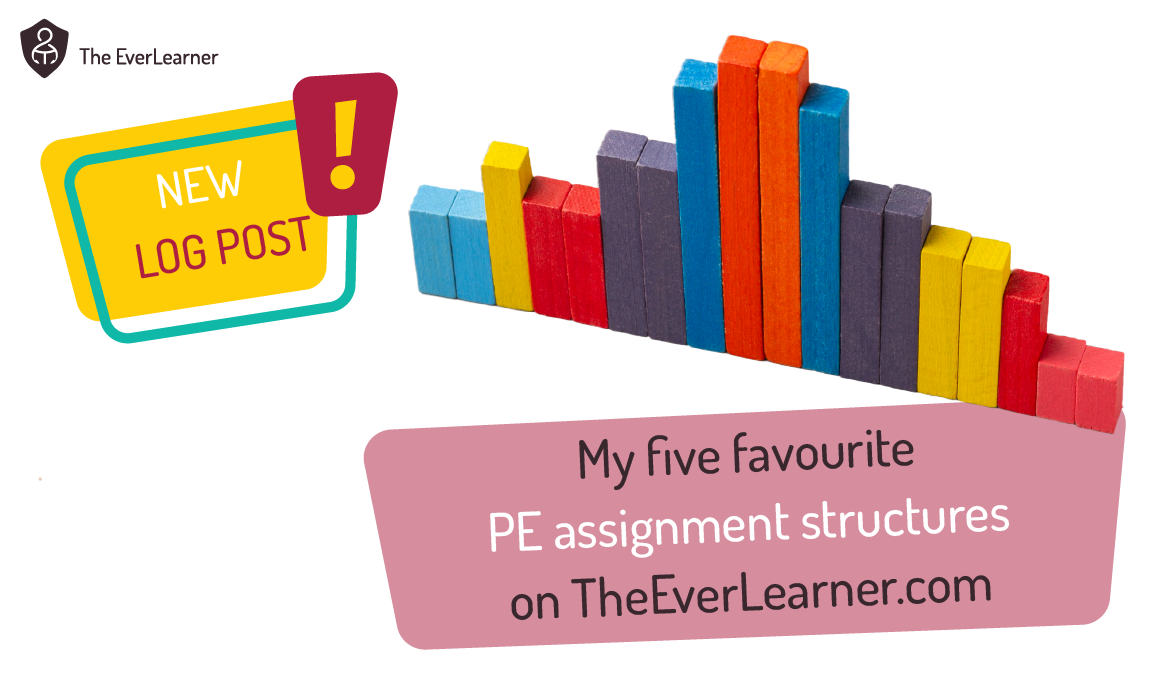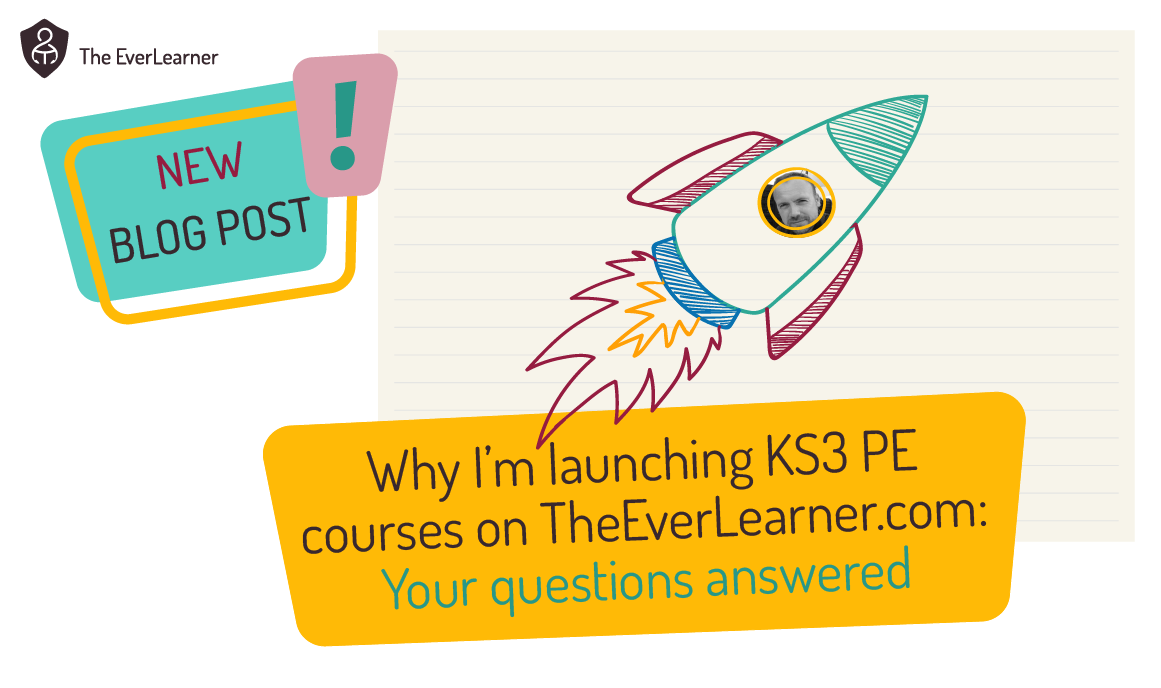Dear PE Teacher, This is HOW to use TheEverLearner.com
Dear PE teachers, customers and colleagues,
This is a blog post I have been wanting to write for a very, very long time. I am writing it for current PE-teacher-users of TheEverLearner.com and in the hope that prospective PE-teacher-users might read it too. We also have a job advert in play at the moment for at least two PE teachers and, therefore, I thought that sharing some of my philosophy and vision may be helpful.
I am the owner and creator of TheEverLearner.com. This is a website that serves in the region of 150k PE students per academic year in their pursuit of excellence in qualification PE such as GCSE, A-level, OCR Nationals and Technicals and BTEC (and many other courses too).
TheEverLearner.com is a very comprehensive environment where PE teachers and students can access, set as tasks and learn from tutorials (taught by me), practice mode quizzing, test mode quizzing, checkpoint mode quizzing (written by me) and exam questions and mark schemes (also written by me). In other words, the options and methodologies that teachers can apply in their PE classrooms is huge and ever-expanding.
For these reasons, I have chosen to write a guide into what I believe is the best (but also achievable), practice in using the platform. It is a series of tips and suggestions that, if implemented, will cause significant improvements in student performance without creating work for a teacher or course manager. In fact, the tips contained are designed to allow a teacher to reallocate lots of traditional, analogue timing to more impacting processes.
In order to focus in on the most relevant ideas, I am choosing to write this post with the following situation in mind:
- Students are preparing for an externally assessed PE exam.
- The group has between three and 60 learners (the latter being a team-teaching scenario).
- The group has the availability of a classroom with standard equipment.
- The classroom has access to basic IT resources such as devices and headphones. The nature of the devices is unimportant.
What’s it all about?
Take a look at this image:
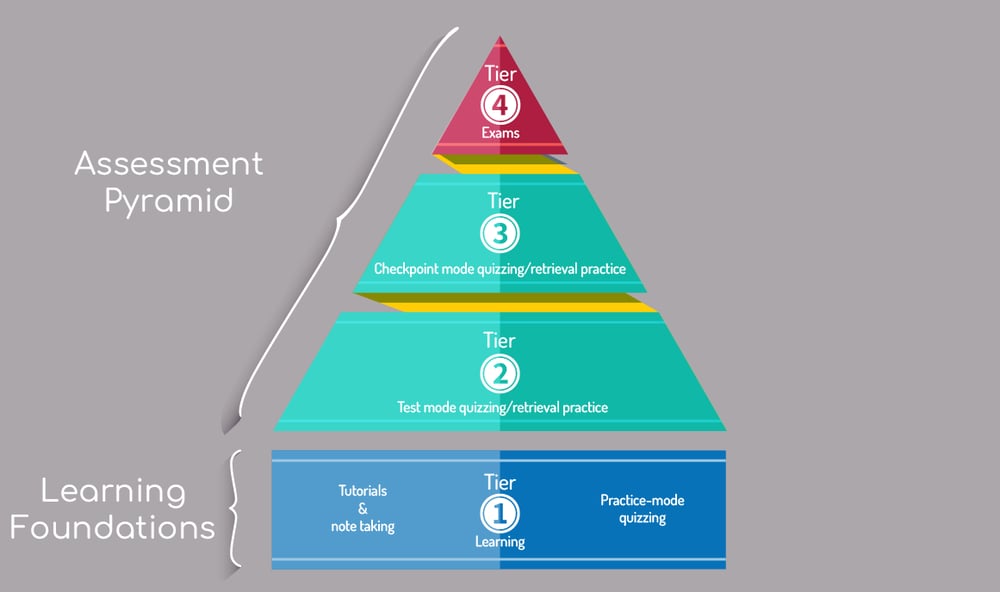
These are the resources that a PE student and teacher has access to via TheEverLearner.com. You will notice that the site offers learning and assessment experiences. Whilst tier 1 is the only “pure learning tier”, all four tiers contain excellent feedback and guidance, meaning that even the most summative assessments (checkpoints and exams) are also learning experiences.
But let’s take them in turn:
Tier 1 - Learning
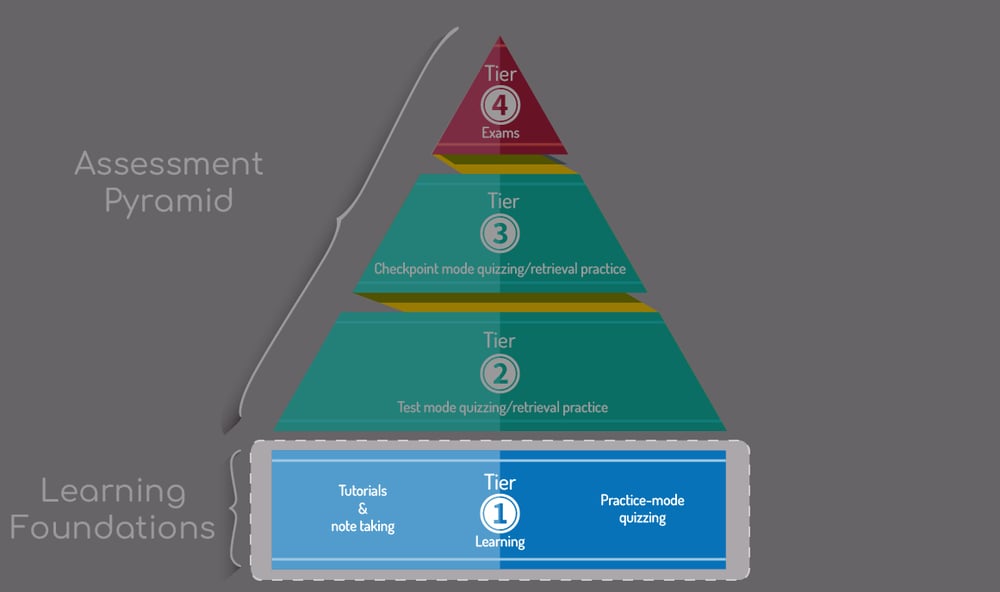
TheEverLearner.com provides tutorials, note-taking and practice mode quizzing for learning. But here, what I will focus on is the best practice usage of these resources:
- I recommend that all students watch and take notes on an absolute minimum of 60% of their course tutorials per academic year.
- This 60% relates to the entirety of the tutorials within a course rather than 60% of each tutorial.
- If a course spans two academic years, such as a GCSE or A-level course, tutorial completion with note taking should be a minimum of 90% of tutorial material but up to 120% if possible. The reason I suggest >100% is that most students, at some point, need to re-study something. This is common.
- I recommend that students should be spending in the region of 15 minutes per lesson on practice mode quizzing.
- This practice mode completion, ideally, would be spaced over time with multiple iterations of a practice session.
How to achieve these tier 1 targets
If the bullet points above are the macro targets, how do we actually achieve them? Alongside consistency and high standards, I want to promote a series of actions:
- Use a pre-loading/flipped structure to help students prepare for their lessons.
- In every “Watch assignment” that you set, recommend to the students that they complete at least five minutes of practice-mode quizzing in association with their watching.
- In every “Test assignment” that you set, remind students that they can return to practice mode at any time if they are struggling.
- On occasion during your lessons, ask your students to visit their Live Data Dashboard and turn any top row items from red or orange to green. This will require them to finish non-completed tutorials and up their practice time.
Tier 2 - Test-mode quizzing
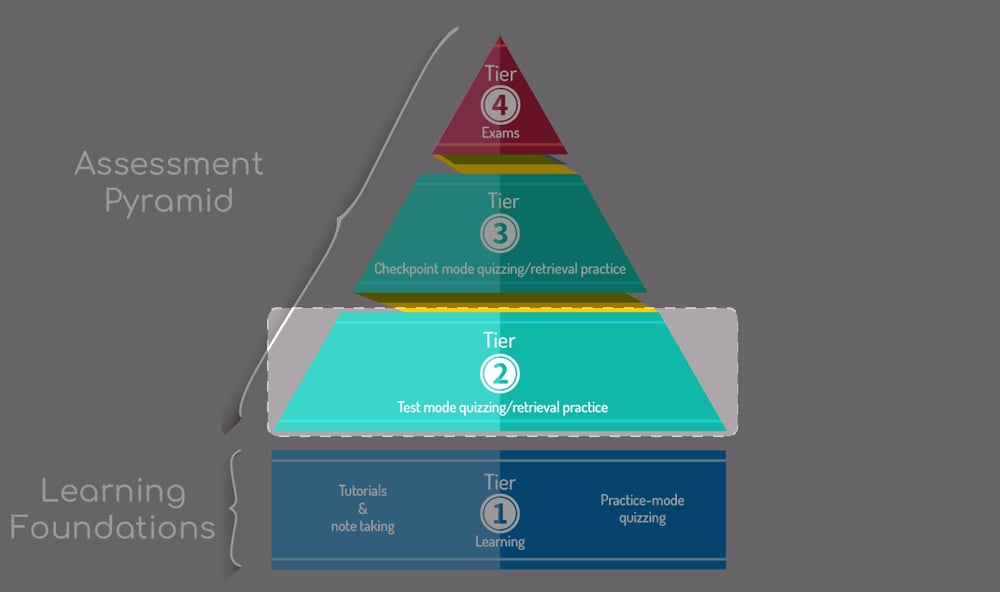
TheEverLearner.com provides quizzing/retrieval practice in test mode for both assessment and learning as well as performance diagnostics.
But here I will focus on the best-practice usage of these resources:
Research, as well as years of experience, indicate that teachers should be aiming to cause students to test on a lesson, weekly and monthly basis in order to cause the maximal retention of acquired knowledge, subject vocabulary and skills. We recommend that, where possible, teachers should guide students to experience test mode in three formats (with many variations possible):
- Used to prove the acquisition of knowledge in a flipped-learning session. In other words, flipped learning should feature “tutorial + mastery test quiz”.
- Used to reactivate recently learned material. For example, questions on today’s (past) lesson but with questions interleaved with associated, previous learning topics at a mastery standard. This causes the interleaving and spacing effect.
- Used to reactivate whole-course, previous learning on a weekly basis. This should be a single-take and non-mastery test quiz of approximately 20 questions provided every single week of course covering all learning (topics to date).
How to achieve these tier 2 targets
- Students should achieve at least 80% scores on flipped-learning test quizzes prior to a lesson in association with a tier 1 tutorial. These mastery test quizzes MUST be both:
- Bite-size - between six and 12 questions.
- Multiple-take test quizzes. Students should persevere or seek help in order to reach 80%..
- Students should achieve at least 80% on test quizzes set post-lesson on newly acquired learning interleaved with older, associated learning. This has three major benefits:
- The spacing effect: students engage with learning over a longer period of time.
- The interleaving effect: students need to “discriminatively contrast” topics within a test quiz just as they do in a formal assessment or exam.
- Desirable difficulty: students experience a “struggle” to master a test-mode quiz so that they retain their knowledge for longer and can recall it in context.
- Students should experience a whole-course 20-question test-mode quiz every single week of their course. This test-mode quiz should cover all previous learning and be a single-take experience with no mastery standard. On completion of this work, students and teachers must review their dashboards to identify areas of forgetting or improvement.
A word on mastery
In almost all cases, setting a mastery standard is appropriate assuming four factors are in place:
- The task is “skinny” or “bite-size”. For example, setting an 80% standard on ten test-mode quiz questions will take a student approximately five minutes. Therefore, restarting this experience is not burdensome.
- The task is repeatable.
- Each iteration of a task is unique. For example, if a student completes a 10-test-mode-question quiz multiple times, it must be unique every time.
- Enough time is given for the student to attempt the challenge, review their learning and then return to re-attempt if the mastery standard is not met. For example, a “by tomorrow” assignment should not be set with a mastery standard but a “whole week” assignment may be.
A word on differentiation
In my experience, differentiation by task and by outcome is either never or almost never appropriate or educationally valid. I have written about this extensively in the past and more details are available here in my previous post entitled "Eight things I will never say in school".
Instead, TheEverLearner.com encourages you to differentiate in the following two ways:
- Differentiation by pace and repetition.
- Differentiation by type of scaffolding.
As you may notice, these forms of differentiation are an acknowledgment that all or almost all students can reach very, very high standards of performance with the appropriate experience. There is no ceiling, no limitation, simply aspiration and the right resources and structures to accommodate the achievement of the aspiration.
Tier 3 - Checkpoint-mode quizzing
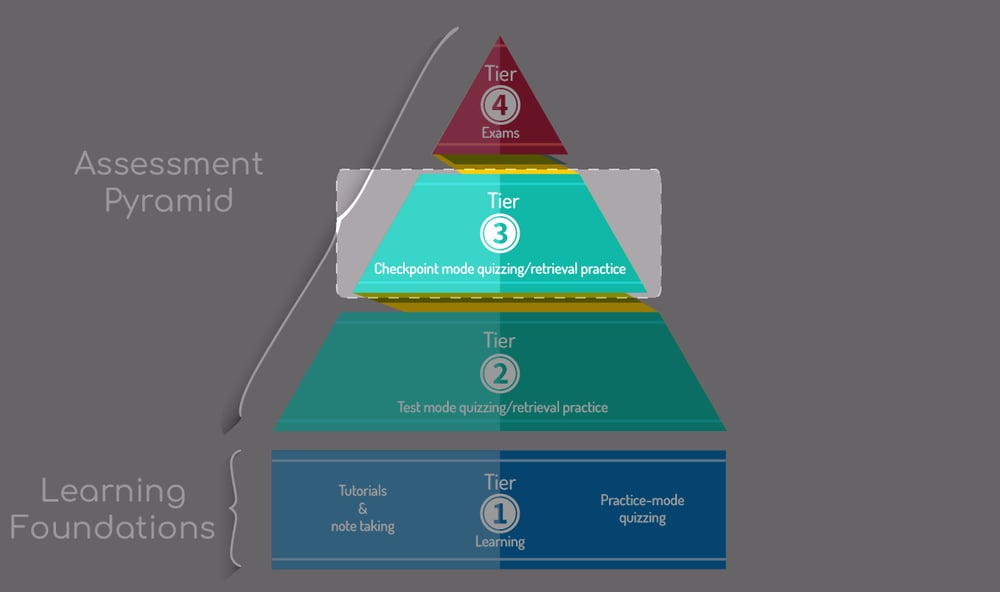
TheEverLearner.com provides quizzing/retrieval practice in checkpoint mode for both assessment and learning as well as performance diagnostics.
Checkpoints are quizzes but they are quizzes “wrapped up like an exam”. To be clear: a checkpoint is never an exam but it does communicate with exam practice. Here’s how:
- Checkpoints are “wrapped like an exam” but are pure quizzing.
- All checkpoints are interleaved.
- Checkpoints introduce learners to time-restricted assessments in a less formal way than an time-restricted exam.
- Checkpoints are summative assessments but can be tweaked towards a mastery experience if time flexibility is available.
- We recommend that students experience every course checkpoint at least twice during their studies. Many students experience checkpoints tens of times, generating the spacing effect.
How to achieve these tier 3 targets
Research, as well as years of experience, indicate that teachers should be aiming to cause students to complete checkpoints on at least a monthly basis in order to cause the maximal retention of acquired knowledge, subject vocabulary and skills over time. We recommend that, where possible, teachers should guide students to experience checkpoint mode in two varying formats (with many variations possible):
- Used as a data extraction and diagnostic tool at the end of a unit of work. This type of checkpoint should be a single-take with no mastery standard.
- Used as a pre-exam practice tool in advance of an exam experience such as an end-of-unit exam. In this context, teachers should consider a mastery standard as an option if the variability of time allows students to achieve the standards at different paces and repetitions.
Tier 4 - Exams
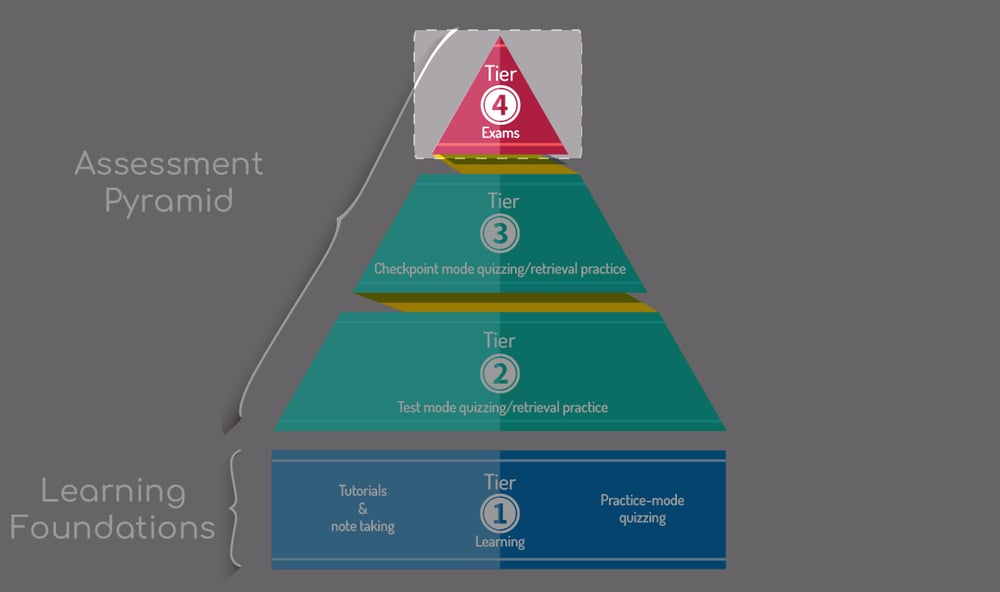
Exam-mode writing via ExamSimulator provides an exam setting, answering and marking environment covering AO1, AO2 and AO3 and featuring a very broad range of high-quality and professionally designed educational imagery.
Exam mode has these characteristics:
- All exams are allocated to students by a teacher.
- All exam questions, mark schemes and marking guidance are pre-written.
- All exam questions, mark schemes and guidance are written after extensive previous exam-board exam analysis.
- Exams can be set as :
- Online assessed (time limit)
- Online practice (no time limit)
- Offline printable
- Exam questions can be filtered by:
- Command skill
- Assessment objective inclusion (on the mark scheme)
- Number of marks
- Search term (for example, questions about “guidance” or “the elbow”)
- Access to the PE Data Centre within the exam builder tool. This allows the teacher to review the exact dynamics of every past-paper question and mark scheme before selecting the most relevant questions.
- In an online, assessed (timed) exam, teachers can allocate extra time to students as required.
- Student online exam writing environment.
- Teacher online marking/processing environment.
- Auto-indicative marking - The website will highlight potentially correct answers for the teacher and link these to the appropriate mark-scheme point.
- Auto-mark allocation, tallying and diagnostic reporting on every exam completed and marked (including printed exams).
Recommendations for tier 4
Tier 4 is both a learning and an assessment layer and features diagnostic instruments throughout.
Research, as well as years of experience, indicate that teachers should be aiming to cause students to examine on a very frequent basis. The frequency should be close to every lesson. In order to cause the maximal retention of acquired knowledge, subject vocabulary and skills over time we recommend that teachers have awareness of a range of different exam purposes as detailed below:
- Students would be expected to answer an average of 15 raw-marks questions per specification area in time-assessed conditions.
- Students should be expected to write extensively in open-book, non-assessed conditions as typical lesson elements.
- Set, write and review skill-based as well as content-based exam experiences. ExamSimulator, in addition to the PE Data Centre, give you a comprehensive set of tools to develop skills like “Describe”, “Explain” and “Evaluate”.
- Set, as often as you deem appropriate, time-restricted exam answering. Our research shows that students experience too little of this prior to sitting an external exam.
- Set, write and review interleaved exam experiences. For example, if you are looking to practise exam questions on planes and axes, interleave questions on joints, the muscular system and the skeletal system too. This will cause, once again, the student to “discriminatively contrast” between concepts and mean they are more accurate at retrieving knowledge and skills in context in the future.
- Set a range of both online and printed exams. You may choose a 50/50 ratio of 60/40 in either direction. Remember: students like online because it is convenient for them but must, typically, also learn to examine with a pen.
- Always, always, always, expect a student to respond proactively to their exam diagnostic.
A word on diagnostics
Online exams have many advantages but amongst them are diagnostics. Machines like our website TheEverLearner.com specialise in collating data and presenting it back to you smartly in an organised fashion. We have even made this available for printed exams. Please, ensure that these diagnostics are valued and acted upon by students.
Finally…
I would like to end this article by summarising, visually, my recommendations for each of our resource tiers on TheEverLearner.com. This image can be considered as “James’s way” but, in truth, is based on extensive research and feedback as well as been founded in the fundamental learning principles upon which I designed the platform itself:

So, what do you think?
Do let me know your thoughts below and have a lovely day.
%20Text%20(Violet).png)
